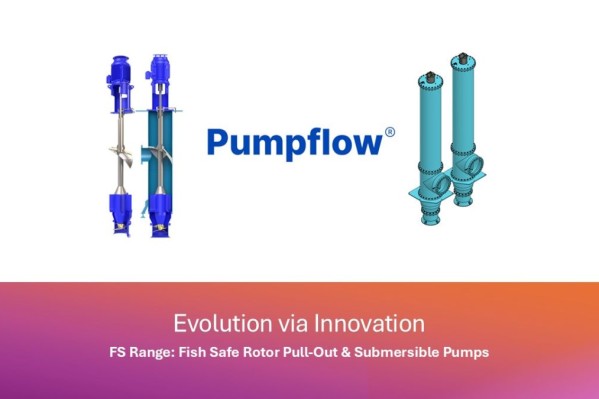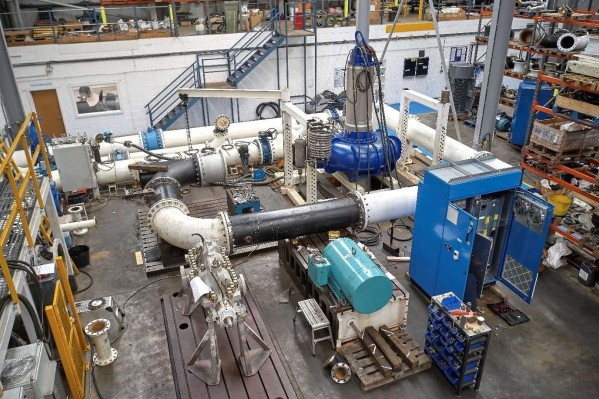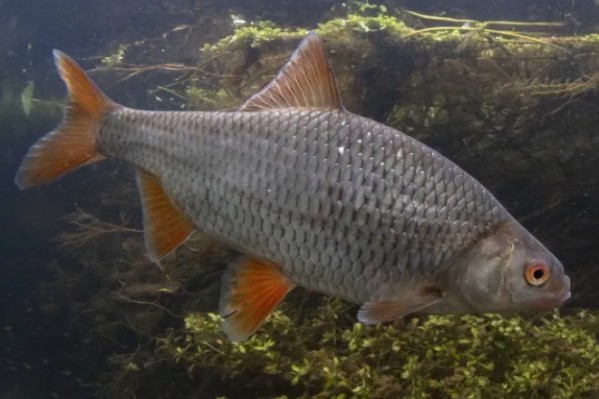For a pump or turbine to be classified as “Fish Safe” the machine must limit fish exposure to stressors such as pressure, shear and strike.
Specifically, fish-friendly pumps must limit fish exposure to:
- Dramatic pressure differentials and high rates of pressure change
- Shear forces caused by rapid flow acceleration or deceleration
- Potential for blade strike, by limiting the number of blades on the impeller and/or increasing blade thickness and limiting rotational speed
Other sources of mechanical injury such as:
- Pinching in gaps between the rotating parts and housings or shearing between impellers and diffuser vanes.
Fish Safe Pump Classifications
Generally speaking there are two types of Fish Safe pumps commercially available for land drainage/flood control applications:
- Rotodynamic
- Archimedean Screw
Both technologies fit with the requirement to lift large volumes of water typically at total heads (lift) of between 1-10m.
Whilst these technologies fundamentally differ, they each offer their own unique advantages which could make either a preferred solution dependant on specific site conditions and application.
Rotodynamic pumps offer an advantage in applications where tidal conditions result in a significant variation in water levels on the discharge/outlet side of the pumping station. This advantage is increased if discharge pipework incorporates siphonic recovery, as in such circumstances, the pumped static head will only ever equate to the difference in water levels on the inlet and outlet side of the pump and not the physical elevation of say a flood bank.

Rotational speed is arguably the primary risk factor with Rotodynamic pumps, hence specific speed should be limited and pure axial type pumps considered with a degree of caution.
An Archimedean screw installed in such a situation would need to have its outlet “pour point” set above the maximum discharge water level to prevent reverse flow when the pump is not rotating, resulting in wasted energy at all times the pump is operated against anything but the maximum design, potentially a 1000-year level, which has statistically a 0.1% chance of happening in any given year. The energy costs associated with an Archimedean screw would therefore be higher.

The very low rotational speed of an Archimedean screw pump design however lends itself most readily to the safe passage of fish. Fish-friendly designs with encapsulated rotor blades, address the potential issue of pinching in close running clearances between the rotor and casing.
Given that the majority of the existing UK infrastructure is built around rotodynamic pump technology, the challenges of tidal levels and the need to minimise energy consumption, Pumpflow Ltd have prioritised the development of such technology and are currently involved in development of an evolutionary range of rotodynamic Fish Safe pumps.
Development work carried out to date is already challenging the initial concept of the use of axial flow hydraulics in Fish Safe applications. The initial phase of development highlights that lower specific speed designs may prove beneficial in terms of both fish safety, installed power and energy consumption. A series of pump tests with Barotrauma Detection Systems (BDS) and live fish will be carried out to further optimise the hydraulic design.
It should also be noted that a pump or hydro-turbine unit itself, is only a component of a pumping station in which all aspect of the design can impact on fish safety. From intake conditions to contours and obstacles in pipework, through to safe exit conditions are all of paramount importance.
For further information contact:
Email: sales@pumpflow.net
Tel: +44 (0)161 667 6050



